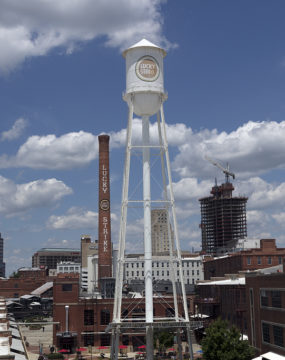Keep up with our latest demographic insights

The 2019 county population estimates from the U.S. Census Bureau are the last set of population estimate before results of the 2020 Census are released in early 2021. Here’s what they tell us about how counties have changed in North Carolina over the past decade. Growth and Decline Statewide, North Carolina has maintained steady growth since the 2010 Census, but this growth has been uneven across the state: 57 counties have grown since 2010 –…

Nationally, there are 383 metropolitan statistical areas (MSA), which are defined as an economically integrated set of counties with a core central city with a population of 50,000 or more. They range in size from Carson City, Nevada (55,414) to the New York-Newark-Jersey City MSA (19,979,477) which crosses New York, New Jersey, and Pennsylvania. Within North Carolina, there are 17 unique metro regions, ranging from Goldsboro (123,248) to Charlotte-Concord-Gastonia (2,569,213 across NC and SC). With…

North Carolina’s population grew to an estimated 10.4 million people as of July 1, 2018, according to new estimates from the U.S. Census Bureau. From July 1, 2017 to July 1, 2018, the state’s population increased by nearly 113,000 individuals. This marks the third consecutive year that the state population has grown by more than 100,000 in a single year. Among the states, North Carolina had the 5th largest numeric increase since 2017. Only Texas (379K), Florida (323K), California…

Migration is the main driver of North Carolina’s population growth. Three of every four new residents added to the state between July 1, 2016, and July 1, 2017, were from net migration, primarily from other states. (Note: individuals are classified as domestic or international migrants based on their country of prior residence, not on individual characteristics such as place of birth or citizenship status.) Between 2016 and 2017, the Census Bureau estimates that North Carolina…

North Carolina’s population grew to an estimated 10.3 million people as of July 1, 2017, according to new estimates from the U.S. Census Bureau. From July 1, 2016 to July 1, 2017, the state’s population increased by nearly 117,000 individuals. This number surpassed last year’s total population increase and marks the largest single year increase in the state’s population since 2010. Among the states, North Carolina had the 5th largest numeric increase since 2016. Only…

Population can grow—or decline—from one of two components of change: net migration (both domestic and international) or natural growth (births and deaths). Both components have contributed to North Carolina’s population growth. Every year since 1980, North Carolina has had more births than deaths, meaning the population has grown from natural increase. The level of natural increase peaked in the late 2000s and has since declined significantly, reflecting the combined impact of fertility declines and population…
North Carolina’s population grew by 112,000 between 2015 and 2016, the largest single year increase since 2010, according to new data from the U.S. Census Bureau. With a growth rate of 1.1%, North Carolina’s 2015-16 growth was faster than the national growth rate (0.7%) and similar to the South’s regional rate (1.1%). Overall, North Carolina’s population has grown by 611,000 since 2010, an increase of 6.4%. The uptick in population growth was fueled by an…
Between 1990 and 1995, North Carolina’s population increased by more than 550,000 new residents, a growth rate of 8.3%. The numeric growth in the next decade was even greater: the state grew by 7.9% to gain an estimated 637,000 new residents between 2000 and 2005. Though North Carolina continues to grow faster than the national average, the 2015 estimates indicate that the size and rate of growth has slowed. Between 2010 and 2015, North Carolina…
“The growth of urban places historically has been fueled largely by in-migration from rural areas (including from other countries)…” – Daniel Lichter & David Brown, “Rural America in an Urban Society” Nearly half of North Carolina’s counties – 47 of 100 – had net out-migration between 2010 and 2015, meaning more people moved away than moved in. There are some clear patterns to this movement. The core counties of the state’s major metropolitan areas—such as…
On average, Wake County added 63 new residents every day between April 1, 2010, and July 1, 2014, according to U.S. Census Bureau population estimates. Both natural increase, more births than deaths, and net migration, more people moving in than moving out, are important for Wake’s population growth, but the main driver is net migration. Every year since 1970, net migration into Wake County has accounted for the majority of its population growth. Since 2010, two-thirds of…
Your support is critical to our mission of measuring, understanding, and predicting population change and its impact. Donate to Carolina Demography today.